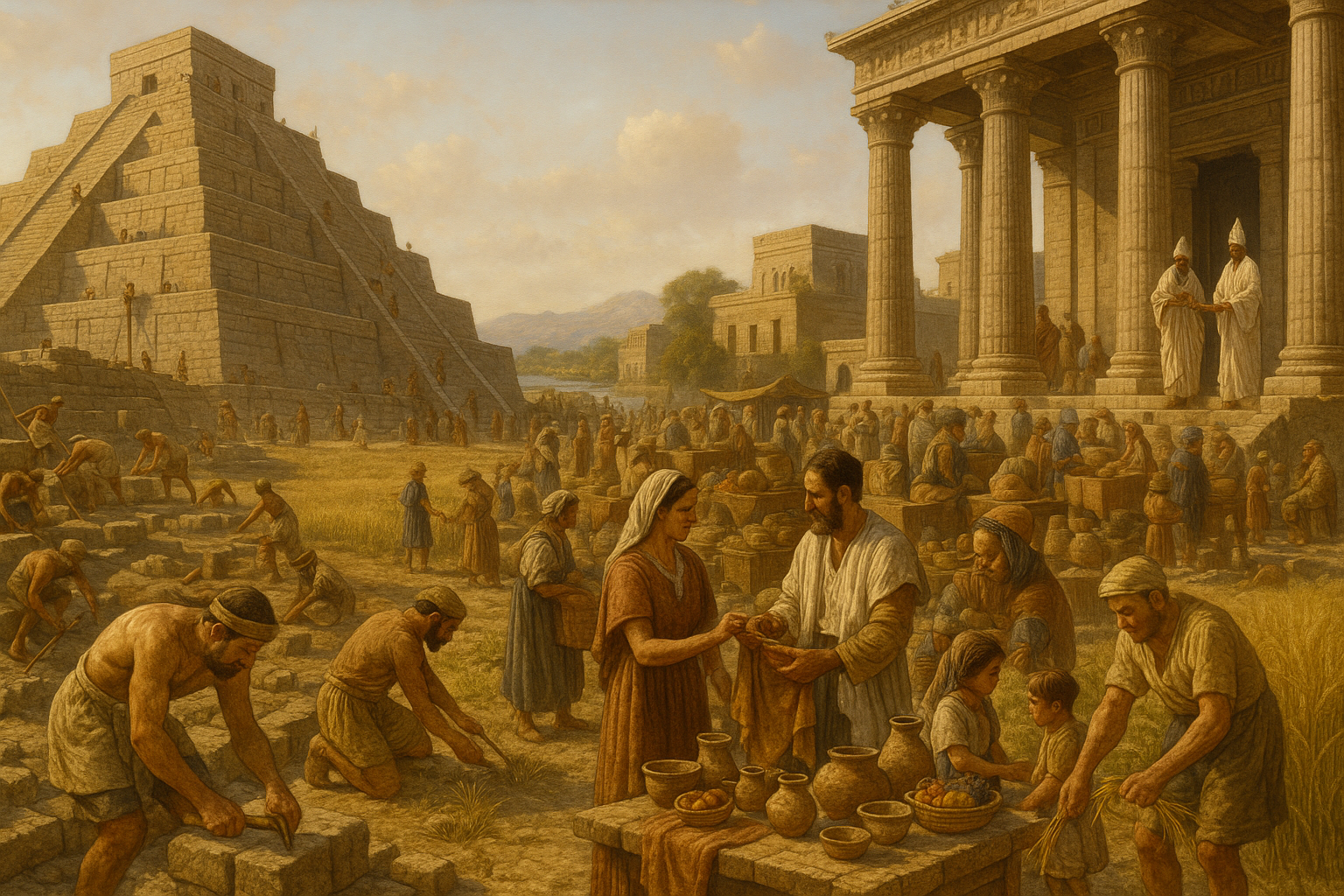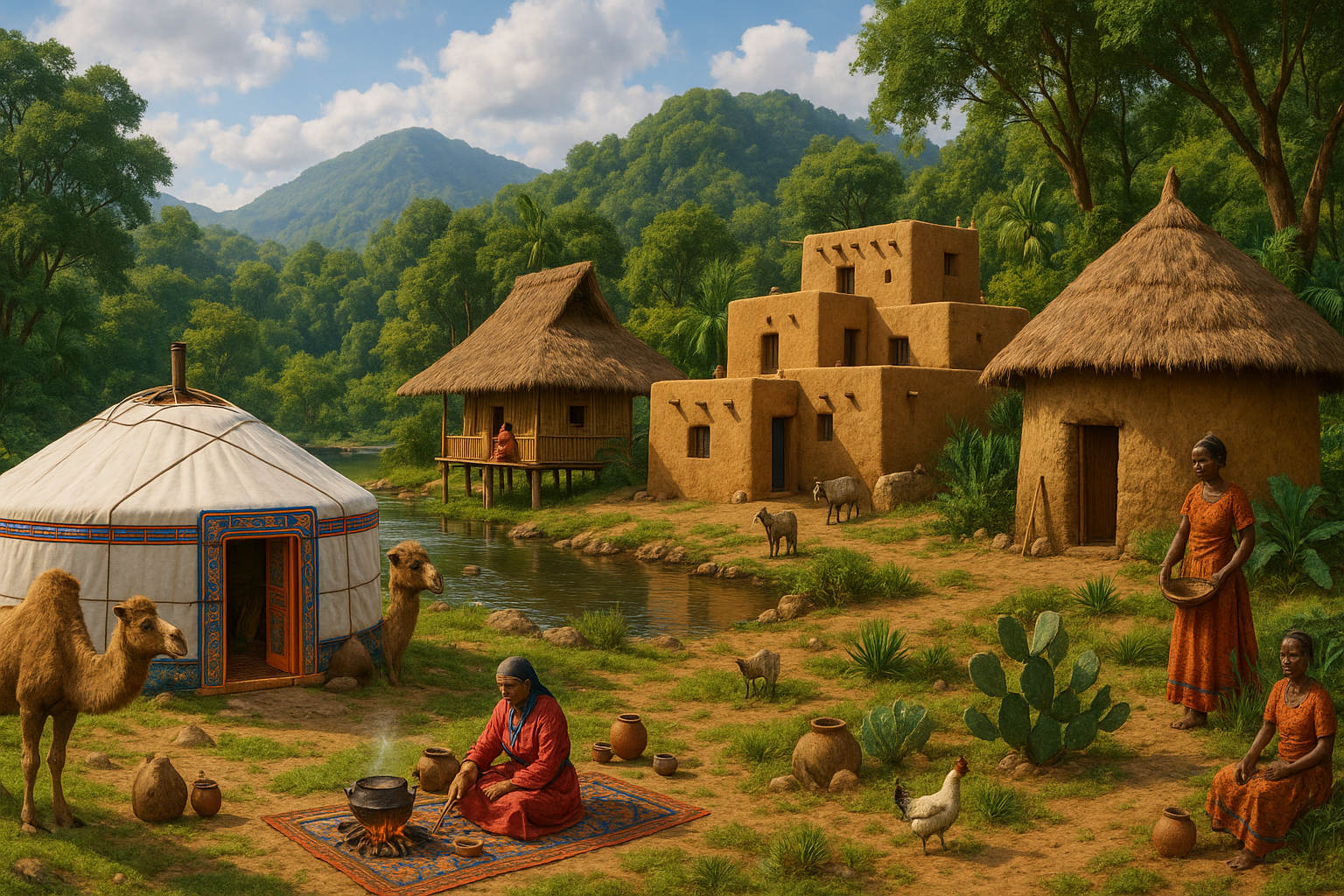In a world where technology often takes the forefront, connecting us through screens and digital conversations, many find themselves yearning for a deeper, more authentic connection to the universe and their own spirituality. This quest for meaning often leads individuals on a path less trodden, seeking wisdom from ancient traditions that promise healing and enlightenment. Among these traditions, shamanism stands out as a powerful spiritual practice, offering guidance, healing, and a profound understanding of the interconnectedness of all life. Shamans, as the keepers of this wisdom, have served as spiritual guides and healers across cultures for thousands of years, bridging the gap between the physical and spiritual realms. 🌿
As we delve into the fascinating world of shamanism, this article will explore the multifaceted role of shamans in contemporary society. We will journey through the history of shamanism, tracing its roots back to ancient civilizations, and examine how this timeless practice has evolved to meet the needs of modern seekers. From the steppes of Siberia to the rainforests of the Amazon, shamanistic practices vary widely, yet all share a common goal: to restore balance and harmony within individuals and communities. Through rituals, ceremonies, and the use of sacred plants, shamans access altered states of consciousness, communicating with the spirit world to bring about healing and transformation.
Throughout this article, we will discuss the various techniques shamans employ to unlock the power within each individual. By exploring the shamanic journey, the use of power animals, and the significance of drumming and chanting, we will uncover how these practices facilitate personal growth and self-discovery. Additionally, we will address the challenges and misconceptions surrounding shamanism in the modern era, as well as its resurgence in popularity as more people seek alternative methods of healing. Whether you are a seasoned spiritual explorer or simply curious about the role of shamans in today’s world, this exploration promises to inspire and enlighten, offering a deeper understanding of how these ancient healers can help us unlock our own inner power. ✨
The Historical Roots of Shamanism
Shamanism is an ancient spiritual practice with a deep-rooted history that spans cultures and continents. Its origins are as diverse as they are profound, offering a window into the spiritual lives of ancient peoples. The word “shaman” is believed to have originated from the Tungusic Evenki language of North Asia, where it translates roughly to “one who knows.” This definition captures the essence of the shaman as a spiritual guide and healer, a role that has been central to human spirituality for millennia.
Shamanism is characterized by its animistic worldview, in which the shaman interacts with the spirit world through rituals, trance, and meditative states to heal, seek guidance, and maintain the balance between humans and nature. These practices have been documented in a variety of forms across the world, from the Siberian tundra to the rainforests of the Amazon. One of the key aspects of shamanism is its reliance on the shaman’s ability to enter altered states of consciousness, often achieved through rhythmic drumming, chanting, or the use of entheogenic plants.
The historical roots of shamanism can be traced back thousands of years. Archaeological evidence, such as cave paintings and ancient artifacts, suggests that shamanistic practices were present in the Upper Paleolithic era. These early forms of spiritual expression often involved rituals that were believed to connect the human world with the divine. For instance, the famous cave paintings in Lascaux, France, depict scenes that some researchers interpret as shamanic rituals, showcasing the integral role these practices played in prehistoric human societies.
Shamanism Across Cultures
Despite its universal themes, shamanism has evolved differently across various cultures, adapting to the unique spiritual and environmental contexts of each. In Siberia, shamans are known for their elaborate costumes adorned with bells, mirrors, and feathers, which are believed to protect them during their spiritual journeys. These shamans often perform healing rituals that involve communicating with ancestral spirits and animal guides to diagnose and treat illnesses.
In contrast, Amazonian shamanism often revolves around the use of powerful plant medicines, such as Ayahuasca, to facilitate spiritual experiences and healing. Ayahuasca ceremonies are typically led by an experienced shaman who guides participants through visions and insights that are believed to bring about profound healing and personal transformation. This practice highlights the shaman’s role as a mediator between the physical and spiritual realms, a theme that is prevalent in shamanic traditions worldwide.
The diversity of shamanic practices across cultures underscores the adaptability and resilience of shamanism as a spiritual tradition. Despite the varying methods and rituals, the core principles of healing, guidance, and connection with the spiritual world remain constant. This universality is what makes shamanism an enduring and compelling aspect of human spirituality.
The Role of Shamans as Healers
Shamans are often revered in their communities for their ability to heal both physical and spiritual ailments. Their healing practices are deeply intertwined with their spiritual beliefs and often involve complex rituals designed to restore balance and harmony to the individual and the community. In many cultures, shamans are seen as the primary healers, holding a unique position of authority and respect.
One of the primary ways shamans facilitate healing is through the use of spiritual journeys or “soul retrievals.” In these rituals, the shaman enters a trance state to travel to the spirit world, seeking to retrieve lost or fragmented parts of a person’s soul. This is believed to address the root causes of illness, which are often seen as spiritual imbalances or disruptions. By restoring these lost soul parts, the shaman aims to reintegrate the individual’s spirit, promoting healing on a profound level.
Another aspect of shamanic healing involves the use of herbal remedies and natural medicines. Shamans are often skilled herbalists, possessing extensive knowledge of the medicinal properties of plants and their applications. This botanical knowledge is passed down through generations and is considered sacred. Shamans may create herbal concoctions, teas, or poultices to treat various ailments, believing that the spiritual essence of the plants enhances their healing properties.
Modern Relevance and Practice
In today’s world, the role of shamans and their healing practices continues to hold significant relevance. As people increasingly seek holistic and alternative approaches to health, shamanic healing is gaining recognition for its potential to address the spiritual and emotional aspects of wellness. Many individuals are turning to shamanic practitioners for guidance in navigating life’s challenges, seeking deeper connections with themselves and the world around them.
The resurgence of interest in shamanism is also reflected in the growing number of workshops, retreats, and online resources dedicated to exploring shamanic practices. These platforms provide opportunities for people to learn about shamanism, experience rituals, and integrate shamanic principles into their own lives. As a result, shamanism is finding a place within contemporary spiritual and wellness communities, bridging the gap between ancient traditions and modern lifestyles.
To gain a deeper understanding of shamanic healing, watch this insightful video on YouTube: Understanding Shamanic Healing – Channel Name. This video offers an engaging exploration of shamanic practices and their transformative potential.
Shamans as Spiritual Guides
Beyond their role as healers, shamans serve as spiritual guides, providing insight and direction to individuals and communities. Their deep connection to the spirit world allows them to offer guidance on various aspects of life, including personal growth, decision-making, and community well-being. In many cultures, shamans are consulted for their wisdom and foresight, acting as intermediaries between the human and spiritual realms.
Shamans use a variety of tools and techniques to provide spiritual guidance. Divination practices, such as reading animal bones, casting stones, or interpreting dreams, are common methods used to gain insight into the future or uncover hidden truths. These practices are deeply rooted in the belief that the spiritual world holds the answers to life’s mysteries and that shamans, with their heightened spiritual awareness, can access this knowledge.
Additionally, shamans often conduct rituals to honor and communicate with ancestral spirits. These rituals are considered essential for maintaining harmony between the living and the dead, ensuring that the wisdom of the ancestors continues to guide and protect the community. By facilitating these connections, shamans help individuals find their place within the broader tapestry of life, fostering a sense of belonging and purpose.
The Impact of Shamanic Guidance Today
In the contemporary world, shamanic guidance is increasingly sought after by those seeking a deeper understanding of their spiritual journey. As people navigate the complexities of modern life, shamans offer a unique perspective that emphasizes interconnectedness and harmony with nature. This perspective resonates with individuals looking to reconnect with their spiritual roots and find meaning beyond the material aspects of life.
The influence of shamanic guidance can also be seen in various therapeutic and spiritual practices. Techniques such as guided visualization, meditation, and mindfulness often incorporate elements of shamanic traditions, emphasizing the importance of inner exploration and connection with one’s inner self. As these practices continue to gain popularity, the role of shamans as spiritual guides becomes increasingly relevant, offering timeless wisdom in an ever-changing world.
For those interested in exploring the role of shamans as spiritual guides, consider joining a workshop or retreat that focuses on shamanic practices. These immersive experiences provide an opportunity to learn from experienced shamans, engage in transformative rituals, and deepen your understanding of the spiritual world.
Comparing Shamanic Practices Across Cultures
The diversity of shamanic practices around the world offers a rich tapestry of spiritual traditions, each with its unique methods and beliefs. While the core principles of shamanism remain consistent, the specific practices and rituals can vary significantly between cultures. To illustrate these differences, consider the following table comparing key aspects of shamanic practices in various regions:
| Region | Key Practices | Spiritual Beliefs |
|---|---|---|
| Siberia | Drumming, chanting, trance | Interaction with ancestral spirits, animism |
| Amazon | Ayahuasca ceremonies, plant medicine | Spiritual cleansing, connection with nature |
| North America | Sweat lodges, vision quests | Harmony with nature, spiritual renewal |
| Africa | Spirit possession, divination | Ancestor worship, community focus |
This table highlights the diverse expressions of shamanism across cultures, showcasing the adaptability of these practices to different spiritual and environmental contexts. By understanding these differences, we can appreciate the richness and complexity of shamanic traditions, recognizing their value in providing guidance, healing, and spiritual insight to people worldwide.
- Explore the history and origins of shamanism.
- Understand the role of shamans as healers and spiritual guides.
- Compare shamanic practices across different cultures.
- Discover the modern relevance of shamanism in today’s world.

Conclusion
Unlocking the Power Within: Shamans as Spiritual Guides and Healers
In the exploration of the fascinating world of shamanism, we have traversed through an intricate tapestry woven with ancient traditions, spiritual wisdom, and healing practices that continue to resonate with profound significance in contemporary society. Throughout this article, we’ve delved into the role of shamans as spiritual guides and healers, exploring their ability to serve as bridges between the physical and spiritual realms, and their capacity to facilitate profound personal and communal transformation.
We began by examining the historical roots of shamanism, understanding how these ancient practices have transcended time and geography to remain relevant in today’s diverse cultural landscapes. Shamans have been revered as the original healers, utilizing their deep connection with nature and the spiritual world to address the physical, emotional, and spiritual needs of their communities. This enduring relevance underscores the timeless nature of the shamanic journey, one that is marked by a deep understanding of the interconnectedness of all life.
Central to shamanic practice is the shaman’s role as a mediator between the human and spiritual worlds. This unique position enables them to access knowledge and healing energies that are beyond the reach of ordinary consciousness. Through rituals, ceremonies, and the use of sacred plants, shamans facilitate journeys into altered states of consciousness, guiding individuals on transformative quests of self-discovery and healing. These journeys often lead to profound insights, helping individuals confront personal challenges and embrace their true potential.
A significant aspect of shamanism is its holistic approach to healing. Unlike conventional medicine, which often focuses solely on physical symptoms, shamanic healing addresses the root causes of illness, recognizing the intricate balance between mind, body, and spirit. This approach not only promotes physical well-being but also fosters emotional and spiritual growth, offering a comprehensive path to healing that resonates deeply with those seeking a more integrative approach to wellness.
Moreover, the resurgence of interest in shamanic practices can be seen as a response to the growing need for spiritual connection and healing in today’s fast-paced, technologically driven world. As individuals grapple with feelings of disconnection and stress, shamanism offers a path to reconnect with nature, themselves, and the greater universe. This spiritual reconnection can lead to a profound sense of peace and purpose, helping individuals navigate the complexities of modern life with greater resilience and clarity.
The cultural resurgence of shamanism also raises important discussions about the respect and preservation of indigenous traditions. As we embrace these ancient practices, it is crucial to approach them with respect and mindfulness, acknowledging their origins and the communities that have safeguarded this wisdom for generations. This respect extends to recognizing the potential for cultural appropriation and ensuring that the practice of shamanism in modern contexts honors its roots.
In conclusion, the power of shamanism lies in its ability to unlock the inherent potential within each individual, guiding them on a journey of self-discovery, healing, and transformation. By embracing the wisdom of shamans as spiritual guides and healers, we open ourselves to a path of profound personal and communal growth. This journey is not only a return to our spiritual roots but also a step forward into a future where holistic well-being is prioritized.
We invite you to reflect on the insights shared in this article and consider how the principles of shamanism might be integrated into your own life. Whether through meditation, connection with nature, or exploring shamanic practices, there are countless ways to embark on this transformative journey. Share your experiences, thoughts, or questions in the comments section below. Your voice is an integral part of this ongoing dialogue. 🌿
If you found this exploration insightful, we encourage you to share it with others who might benefit from a deeper understanding of shamanism and its healing potential. Together, we can foster a community that values spiritual growth and holistic healing.
For those interested in further exploration, numerous resources are available to deepen your understanding of shamanism. Reputable books, workshops, and online courses can provide additional guidance and knowledge. Engaging with these resources can enrich your journey and connect you with a community of like-minded individuals.
As you continue on your path, remember that the journey of unlocking the power within is a deeply personal and unique experience. Trust in your own wisdom and intuition, and remain open to the transformative possibilities that lie ahead. 🌟
In this way, we can all contribute to a world where spiritual healing and guidance are accessible to all, nurturing a collective consciousness that embraces the interconnectedness of life and the beauty of our shared human experience.
Toni Santos is a visual storyteller and experimental artisan whose work explores the strange frontiers where science meets art. Fascinated by the forgotten, the obscure, and the wonderfully absurd, Toni brings bizarre scientific experiments to life through provocative visual narratives and handcrafted creations that blur the line between curiosity and discovery.
His journey is rooted in a passion for the eccentric side of science — from electric shocks on cadavers to botany in hostile environments, from Victorian medical oddities to animal behavior gone rogue. Each project Toni undertakes sheds light on real (and sometimes questionable) scientific ventures that push the boundaries of human understanding.
With a background in visual design and hands-on craftsmanship, Toni blends artistic precision with conceptual boldness. His creations aren’t just decorative — they provoke, disturb, and invite the viewer to reconsider what counts as science, progress, or even sanity. Often inspired by true experiments — like galvanic resurrection, psychological endurance tests, or 19th-century pseudo-science rituals — Toni’s work reanimates these bizarre chapters of history with aesthetic intrigue and critical reflection.
As the creative force behind Vizovex, Toni invites you to explore a world where the strange becomes symbolic, the grotesque becomes beautiful, and every experiment tells a story worth unearthing.
His work pays tribute to:
The brilliant madness of forgotten experiments
The symbolic power of science at the edge of reason
The beauty in questioning what we think we know
Whether you’re a curious mind, a lover of scientific history, or simply drawn to the uncanny, Toni welcomes you to explore a realm where aesthetics and absurdity collide — one experiment, one mystery, one creation at a time.





